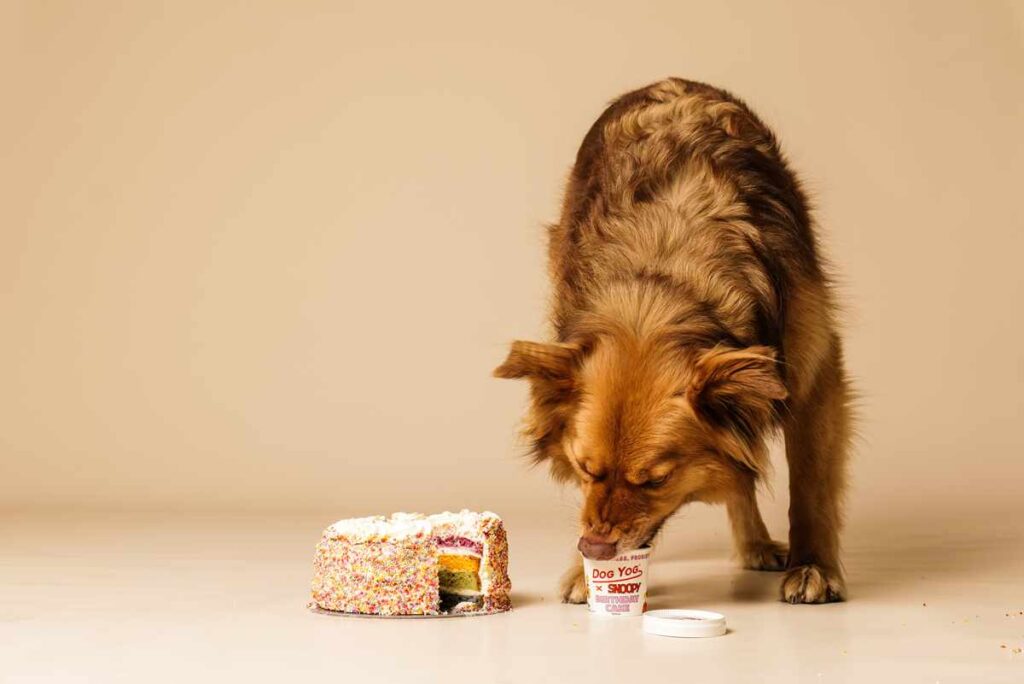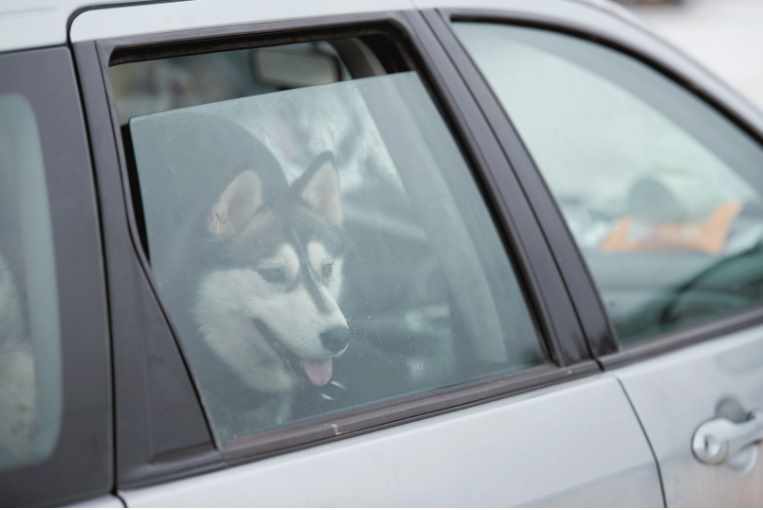
Estimated reading time: 1 minute
As the temperature continues to climb, many pet owners are asking how to keep dogs cool in hot weather.
And that’s a very relevant question, given the number of pets suffering heatstroke annually is increasing.
Keep reading to learn all about keeping pets safe in the heat, as well as essential tips on water safety for dogs, and how to keep dogs cool in the hot weather.
How to keep dogs cool in hot weather
Whether it’s a dog, cat, rabbit, or even a farm animal; hot weather can pose a real danger to our pets.
“It’s starting to get warm, and with the predictions of a sweltering summer, pet owners need to be extra vigilant when it comes to heat and how it affects their pets,” Nadia Crighton from Pet Insurance Australia warns.
In 2022, Pet Insurance Australia witnessed a massive increase in heatstroke claims, with a 46% increase from 2021 and 2022.
The most prevalent months for increase were between November and March.
So, with the weather expected to be much hotter this summer, many pets around Australia are at risk of suffering from this life-threatening condition.
“Heatstroke can come on quickly and end terribly for pets,” Crighton says.
“Keeping your pet cool is important for all breeds, regardless of their size or coat thickness.”
“Dogs cannot regulate their body temperatures like humans and can overheat very quickly, particularly during summer,” Crighton says.
“Certain breeds, such as the Brachycephalic breed group or the squishy face dogs, can suffer terribly during hot weather.
“If you own a breed in this category, such as the French Bulldog, Boxer or Boston Terrier, you must take extra precautions during the hot weather.”
Keep pets safe in heat
Pets rely on us for their care and as owners, it’s essential to know what to avoid.
Like hot cars, hot pavements, and sun damage.
It’s also important to know the signs and symptoms that indicate your pet is in distress and real danger.
“Your car can act like an oven in a matter of minutes regardless of if you have the windows cracked or if you are parked in the shade,” Crighton says.
“If you cannot take your pet with you, it’s best you leave them at home with good shelter and plenty of water.”
Cool ideas to keep pets comfortable
PIA has shared some great ideas to keep your pets cool this summer….
- Freeze ice cream containers full of water and a few treats for summer play.
- Fill up a children’s clam-shell pool for water fun.
- Allow your pet access to cold concrete or tiles.
- Clip/trim long-haired breeds.
- Hose under trees to keep the soil cool.
- Only exercise during early morning and late afternoon.
- Check pavements with the back of your hand – if it’s too hot for your hand it is too hot for precious paws.
“Also, check where your water bowls are situated and keep them out of the sun,” warns Crighton.
Steel bowls will heat up extremely quickly in direct sunlight.

Essential tips to keep pets safe in the heat
PETstock vet Dr Tara Morris from also shares some tips for owners to ensure the safety of their pets, both in their backyard and when out on adventures.
Never leave a pet in a car
It might seem obvious, but it’s never ok to leave pets in a car alone.
While it’s especially dangerous to leave your pet in the car during the warmer months, Dr Tara says it can be life-threatening even on cooler days.
“The temperature inside a car can be 30-40 degrees hotter than outside on any given day,” says Dr Tara.
“Leaving a window open or the air con on will do little to nothing to help your pet’s chances of survival.
“Dogs are unable to regulate their body temperature and will try to cool themselves down with excessive panting, which if they are unable to access water, can lead to dehydration or heatstroke.”

Hot pavements can burn paws
Playing outside in the summer sun means that paws will encounter hot surfaces like pavement and stones.
“The temperature of the ground is significantly hotter than the temperature of the air and absorbs heat quickly, putting your pets’ paws at risk of blistering.
“If you’re not sure whether the ground is too hot for your dog, place your own hand on the ground for five to seven seconds; if it is too hot for you to keep your hand on it, then it is too hot for your dog’s delicate paws.
Dr Tara adds that if a dog has suffered blisters on their paws, it’s essential owners treat it immediately by placing a cool, damp towel under their feet.
For severe cases, seek veterinary assistance as soon as possible.
Avoid walking dogs in summer heat
On particularly hot days, it’s best to avoid running with your dog; in fact, even a short stroll around the block should only be done in the early morning or in the evening.
Dr Tara says that if owners can only take their dog out during the middle of the day, then make sure it’s only a light stroll in shady, grassy areas.
“The biggest risk to heatstroke is your pet’s immediate environment; where possible, owners should bring a water bowl along for the walk.”
Create a cool space in home or yard
Dr Tara says it’s important pets have access to a safe, cool space with water.
On very hot days, owners should increase the number of water bowls throughout the yard and home.
And it’s important to remember to keep refilling them throughout the day.
“If you are feeling hot and bothered, your pet will be feeling warmer with their heavy coat of fur,” says Dr Tara.

Pet sunscreen
A huge myth amongst pet owners is that our pets can’t get sunburnt.
The reality is that just like the rest of us, animals – particularly breeds with shorter coats – are prone to sun damage.
“Sunscreens such as Petkin Doggy Sun Stick, can be applied to your pet by first testing out a small area on the body to test for reactions.
“Once you know your pet can tolerate it, generously apply it to areas least covered in fur.
“After applying the sunscreen, supervise your pet for a couple of minutes so that the cream can be absorbed without being licked away.”
Water safety for dogs
It is a favourite past time of many animals and, whether it be at the beach or your backyard pool, swimming is a great way for dogs to cool down.
While having a quick dip is beneficial, it’s important to keep an eye on them in case they get into any water-related trouble.
“In the summer sun your dog may be overheating without realising it, which can lead to dehydration and exhaustion,” explains Dr Tara.
“Exhaustion is dangerous, and your pet may struggle to stay afloat and swim with ease.
“Keep an eye out for any signs of discomfort and vomiting at the beach, which may be signs of drinking unwanted sea water.”

Swimming lessons for dogs
When the weather heats up, dog owners are increasingly turning to swimming as a fun and healthy activity for their pets.
And it seems dog swimming lessons have become a sought after service in recent years.
Professional trainers teach dogs how to enter and exit pools safely, swim efficiently, and build confidence in the water.
This training is particularly beneficial for breeds that aren’t natural swimmers or for dogs that have shown apprehension towards water.
Tips for teaching dogs to swim
Teaching a dog to swim is a valuable skill that can be both a fun activity and a crucial safety measure.
But while some dogs take to water naturally, others may need gentle encouragement and training.
As a dog owner, it’s important to approach this process with patience, understanding, and a focus on safety.
We’ve highlighted the important tips for owners to help teach their dogs how to swim:
Starting slowly and safely: The first step in teaching your dog to swim is to introduce them to water in a calm and controlled environment. Start with shallow water where your dog can feel the ground under their feet. It could be a kiddie pool or a shallow part of a calm lake. Let your dog explore the water at their own pace. Encourage them with a cheerful voice and maybe some water-safe toys. It’s crucial not to force your dog into the water as this can cause fear and aversion.
Using a dog life jacket: For safety and added buoyancy, consider using a dog life jacket. This can be especially important for breeds that are not natural swimmers or for dogs that are apprehensive about water. A life jacket can give your dog confidence and are vital for deeper water or open areas like lakes or the sea.
Building confidence: Gradually encourage your dog to go deeper into the water. You can do this by slowly walking into the water yourself and calling your dog to you. Make sure to always praise and reward them for their bravery. Treats can be a great motivator, but ensure they are given safely.
Teaching swimming movements: Once comfortable in water, teach them swimming techniques by supporting their belly in deeper water. This will encourage them to use their legs to paddle. Most dogs will instinctively start dog paddling, but some may need a little time to get the hang of it. Keep these sessions short and positive.
Never leave your dog unsupervised: Whether your dog is a seasoned swimmer or just learning, never leave them unattended. Always supervise to prevent accidents, such as getting caught in undercurrents in rivers or waves at the beach.
Rinse after swimming: After swimming, rinse your dog off with fresh water. Pool chemicals, salt from the sea, or bacteria from lakes can irritate a dog’s skin and coat.
Watch for signs of fatigue: Dogs, especially those that are not used to swimming, can tire quickly. Watch for signs of fatigue and encourage your dog to take breaks. If they seem tired, call it a day.
Avoiding overexertion: It’s important to remember that not all dogs are built for long periods of swimming. Dogs with short muzzles, such as bulldogs or pugs, can have a harder time breathing, especially when exerting themselves.
Emergency preparedness: Know basic pet first aid and be aware of the nearest veterinary clinic. It’s always better to be prepared for any situation that might arise.
Respect your dog’s limits: Finally, it’s important to understand and respect your dog’s limits. Some dogs may never enjoy swimming, and that’s okay. There are plenty of other ways to have fun and exercise with your dog.
By following these guidelines, you can help ensure that swimming is a safe and enjoyable activity for your dog.
But remember, every dog is different, and what works for one may not work for another.
The key for all owners is to use patience, positive reinforcement, and a focus on safety.
Swimming lessons for dogs Sydney and Brisbane
If you’d rather turn to the professionals to teach your pooch how to swim, you’re in luck!
In response to the growing demand, several doggy swim schools now operate in Australia.
These schools offer a range of services from beginner lessons to advanced swimming techniques.
Here are some schools for our Sydney and Brisbane dog owners:
- Paws Aboard (Sydney): Offering tailored swim sessions for dogs of all ages and breeds.
- The Dog Swim Spa (Sydney): A facility that focuses on both fun and therapeutic swimming sessions.
- Brisbane Pet Aquatics (Brisbane): Specializes in swim lessons and hydrotherapy for dogs.
- AquaPaws Canine Wellness Centre (Brisbane): Provides swimming lessons alongside rehabilitation services.
Signs of heatstroke in dogs
Heatstroke is a severe and potentially life-threatening condition in dogs.
If you suspect your dog is suffering from heatstroke, you must seek veterinary treatment and advice quickly.
Symptoms can include:
- Excessive panting: In dogs, rapid and extreme panting is often the first sign of heatstroke.
- Drooling: Excessive drooling may accompany panting as the dog’s body tries to cool down.
- Increased heart rate: The heart rate may become elevated as the body attempts to circulate blood and cool down.
- Warm or hot to the touch: The dog’s body may feel excessively warm or hot when touched.
- Lethargy & weakness: Heatstroke can cause the dog to become weak, lethargic, and unresponsive.
- Vomiting & diarrhoea: Gastrointestinal symptoms may occur, including vomiting and diarrhea. This may also contain blood.
- Collapse: In severe cases, the dog may collapse, become unconscious, or have seizures.
- Loss of coordination: The dog may exhibit unsteady movements, stumbling, or incoordination.
- Dizziness: Heatstroke can lead to disorientation and confusion.
- “Prevention is always better when it comes to heatstroke.
- “Simple things such as changing your exercise regime and ensuring your pet has ample shade and water and is never left alone in the car can ensure they do not become a victim of heatstroke,” Crighton says.
Cat care tips during hot weather
RSPCA Qld shares some tips for keeping cats safe from the heat

Dogs aren’t the only ones to suffer in the hot weather.
Cats are just as susceptible, so the RSPCA has given their top tips for keeping your feline safe from the summer heat.
- Make sure their water is placed inside, or in a cool, shady spot outside and that it is easily accessible
- Leave a fan on or put some wet towels down throughout the house that cats can use if they choose
- Ensure they have access to a cool spot; during warmer days they won’t be as active and will just look for a nice cool spot to nap throughout the day
- White cats are especially prone to skin cancers, so owners should keep them indoors and, if exposed to the sun, place sunscreen on their nose and tips of their ears
- Don’t encourage your cat to be active, as running or playing uses up their energy and can quickly lead to overheating
- Know the signs of heat stroke! Just like dogs, cats exhibit excess panting and salivation. If you think your cat is suffering heat stroke, bring him or her into the coolest part of the home and place cool, wet cloths on their fur.

There is pet cooling mat’s that you get for your dog or cat which may help
Thanks Lisa, that’s a great suggestion- especially for days like today!